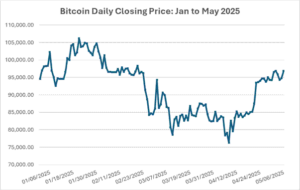According to preliminary data from the Bureau of Economic Analysis, the U.S. economy grew at an annualized rate of 2.8% in the third quarter, slightly below economists' expectations of 2.9% and down from the 3% growth rate recorded in the second quarter. While the growth rate fell short of forecasts, many economists noted that this still represents solid economic performance. Paul Ashworth, Chief North America Economist at Capital Economics, remarked that the U.S. economy is "doing just fine" despite the slight miss.
GDP Growth and Consumer Spending Trends
The moderation in GDP growth reflects a slight slowdown in consumer spending, the primary driver of the U.S. economy. Although spending has remained resilient in recent quarters, third-quarter data indicates that inflation concerns may have tempered household consumption. The personal consumption expenditures (PCE) index, which excludes volatile food and energy categories, grew by 2.2% in the third quarter, surpassing the expected 2.1% but below the 2.8% increase seen in the prior quarter. This drop in PCE growth is significant because it suggests that price increases have begun to stabilize.
The lower-than-expected GDP growth rate comes as the Federal Reserve weighs its next steps in adjusting monetary policy. As inflation shows signs of moderating, the Fed has been considering a more dovish stance. Entering the third-quarter data release, the market has priced in a 99% likelihood that the Fed will cut rates by 25 basis points at its upcoming meeting, according to the CME FedWatch tool.
Economist Reactions and Implications for the Fed
Economists have mixed views on the third-quarter GDP data, but most agree that the figures indicate steady growth, which could benefit the Federal Reserve's policy-making. Ryan Sweet, Chief U.S. Economist at Oxford Economics, commented that the GDP data, despite being backward-looking, sends a clear message: the economy remains on a stable growth path while inflation appears to be moderating. He sees this as good news for the Fed as it suggests the possibility of lowering interest rates without jeopardizing economic stability.
Sweet further elaborated that the steady growth trend reduces the risk of widespread layoffs, which has been a primary concern amid tightening labor markets. "This reinforces our confidence in our above-consensus growth forecast for next year," Sweet added. He believes the stability demonstrated in the third quarter provides a strong foundation for sustained economic expansion in the coming year.
Job Market Outlook and Employment Data
The GDP data is expected to be followed closely by October’s jobs report, which is due to be released this Friday. Economists forecast that the U.S. economy added 110,000 jobs in October, a decrease from the 254,000 jobs added in September. The lower job growth forecast is partly attributed to a cooling labor market as businesses adjust their hiring practices in response to economic uncertainty.
Analysts believe that the upcoming employment report will provide additional insights into the health of the labor market, an important indicator for Fed policy. If the October data aligns with expectations, it could reinforce the Fed’s decision to adopt a more accommodative policy stance in its upcoming meetings. However, if job growth significantly exceeds expectations, it may prompt the Fed to reconsider its approach.
Market Reactions and Investor Sentiment
The stock market has responded positively to signs of moderating inflation, with analysts suggesting that a slowing economy combined with falling inflation creates a favorable environment for equities. Strategists have noted that the third-quarter GDP data supports a "bullish backdrop" for stocks, as it suggests that economic fundamentals remain solid while inflation concerns are easing. Investors are optimistic that a stable economy and falling inflation will lead to a more predictable interest rate environment, which could benefit both corporate earnings and stock valuations.
Broader Economic Implications
The third-quarter GDP report has broader implications for the U.S. economy. While economic growth is slightly below expectations, the data reflects a resilient economy with reduced inflationary pressures. This balance is crucial for the Federal Reserve as it seeks to bring inflation down without causing an economic contraction. Should this trend of stable growth and easing inflation continue, it could support a gradual reduction in interest rates, potentially revitalizing borrowing and investment.
Economists are closely monitoring the combination of GDP growth, inflation, and employment data to assess the likelihood of a soft landing for the U.S. economy. A soft landing would mean reducing inflation without triggering a recession, a challenging feat that the Fed has been aiming to achieve with its recent policy decisions.
Conclusion
In summary, the third-quarter GDP data paints a picture of an economy that is growing steadily, albeit at a slower pace, with inflation showing signs of easing. The Federal Reserve's next moves will be closely watched, as any adjustments to interest rates could have significant implications for economic growth and market stability. For forex market participants, understanding these dynamics will be essential as they consider the potential impact on currency valuations, particularly the U.S. dollar. With both inflation and job growth data influencing the Fed’s upcoming decisions, investors should stay attuned to economic indicators to anticipate future policy changes and market trends.





